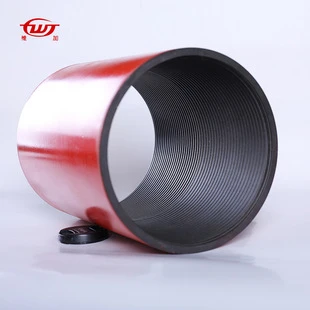- Afrikaans
- Albanian
- Amharic
- Arabic
- Armenian
- Azerbaijani
- Basque
- Belarusian
- Bengali
- Bosnian
- Bulgarian
- Catalan
- Cebuano
- Corsican
- Croatian
- Czech
- Danish
- Dutch
- English
- Esperanto
- Estonian
- Finnish
- French
- Frisian
- Galician
- Georgian
- German
- Greek
- Gujarati
- Haitian Creole
- hausa
- hawaiian
- Hebrew
- Hindi
- Miao
- Hungarian
- Icelandic
- igbo
- Indonesian
- irish
- Italian
- Japanese
- Javanese
- Kannada
- kazakh
- Khmer
- Rwandese
- Korean
- Kurdish
- Kyrgyz
- Lao
- Latin
- Latvian
- Lithuanian
- Luxembourgish
- Macedonian
- Malgashi
- Malay
- Malayalam
- Maltese
- Maori
- Marathi
- Mongolian
- Myanmar
- Nepali
- Norwegian
- Norwegian
- Occitan
- Pashto
- Persian
- Polish
- Portuguese
- Punjabi
- Romanian
- Russian
- Samoan
- Scottish Gaelic
- Serbian
- Sesotho
- Shona
- Sindhi
- Sinhala
- Slovak
- Slovenian
- Somali
- Spanish
- Sundanese
- Swahili
- Swedish
- Tagalog
- Tajik
- Tamil
- Tatar
- Telugu
- Thai
- Turkish
- Turkmen
- Ukrainian
- Urdu
- Uighur
- Uzbek
- Vietnamese
- Welsh
- Bantu
- Yiddish
- Yoruba
- Zulu
casing collar
Understanding Casing Collars in Oil and Gas Drilling
In the oil and gas industry, casing collars play a crucial role in the integrity and efficiency of drilling operations. These vital components are used in the casing process to support the drilled wellbore and ensure that the well remains open and functional throughout its lifecycle. This article explores the purpose, types, and significance of casing collars in drilling operations.
What are Casing Collars?
Casing collars are specialized mechanical devices that are attached to the casing pipes during the drilling process. Their primary function is to provide structural stability and ensure proper alignment of the casing string within the wellbore. These collars are typically made of high-strength steel and are manufactured to withstand the extreme conditions encountered during drilling activities.
Purpose of Casing Collars
1. Structural Integrity One of the primary purposes of casing collars is to enhance the overall structural integrity of the well. By providing a solid anchoring point within the casing string, these collars help prevent buckling and deformation, which can occur under significant pressure or when subjected to external forces.
2. Fluid Management Casing collars facilitate the management of fluids within the wellbore. They play a role in the control of cement placement during the casing operation, ensuring a proper seal between the casing and the formation. This seal is vital to prevent leaks, which can result in environmental hazards and loss of pressure in the well.
3. Ease of Installation Casing collars simplify the installation process of the casing strings. By creating a defined point for joining sections of casing pipes, these collars enhance the efficiency of the drilling operation, saving both time and resources.
Types of Casing Collars
casing collar

Casing collars come in various types, each designed for specific applications and conditions
1. Standard Casing Collars These are the most commonly used collars and are utilized in typical drilling operations. They come with various thread types to facilitate easy connections between casing pipes.
2. Float Collars Float collars are equipped with one-way valves that allow cement to flow down while preventing backflow during the cementing process. This feature is crucial in ensuring a proper seal and preventing the mixture from entering the wellbore.
3. Centralizer Collars Designed to keep the casing centered within the wellbore, centralizer collars are essential in ensuring uniform cement distribution around the casing, which enhances the sealing capability and overall well integrity.
The Significance of Casing Collars
The significance of casing collars extends beyond their mechanical functions. They are essential in ensuring that drilling operations are safe, efficient, and environmentally responsible. By maintaining the integrity of the wellbore and preventing leaks, casing collars contribute to the overall success of oil and gas extraction. Furthermore, proper selection, installation, and management of casing collars can lead to reduced operational costs and increased production efficiency.
Conclusion
In conclusion, casing collars are indispensable elements in the drilling process of oil and gas wells. They not only provide physical support and alignment but also serve critical roles in fluid management and operational efficiency. Understanding the purpose and types of casing collars can greatly benefit drilling engineers and companies, leading to safer and more efficient drilling operations in the challenging environments of the oil and gas industry. As technology progresses, innovations in casing collar design and application will continue to enhance the performance and sustainability of drilling activities.
-
Tubing Pup Joints: Essential Components for Oil and Gas OperationsNewsJul.10,2025
-
Pup Joints: Essential Components for Reliable Drilling OperationsNewsJul.10,2025
-
Pipe Couplings: Connecting Your World EfficientlyNewsJul.10,2025
-
Mastering Oilfield Operations with Quality Tubing and CasingNewsJul.10,2025
-
High-Quality Casing Couplings for Every NeedNewsJul.10,2025
-
Boost Your Drilling Efficiency with Premium Crossover Tools & Seating NipplesNewsJul.10,2025







